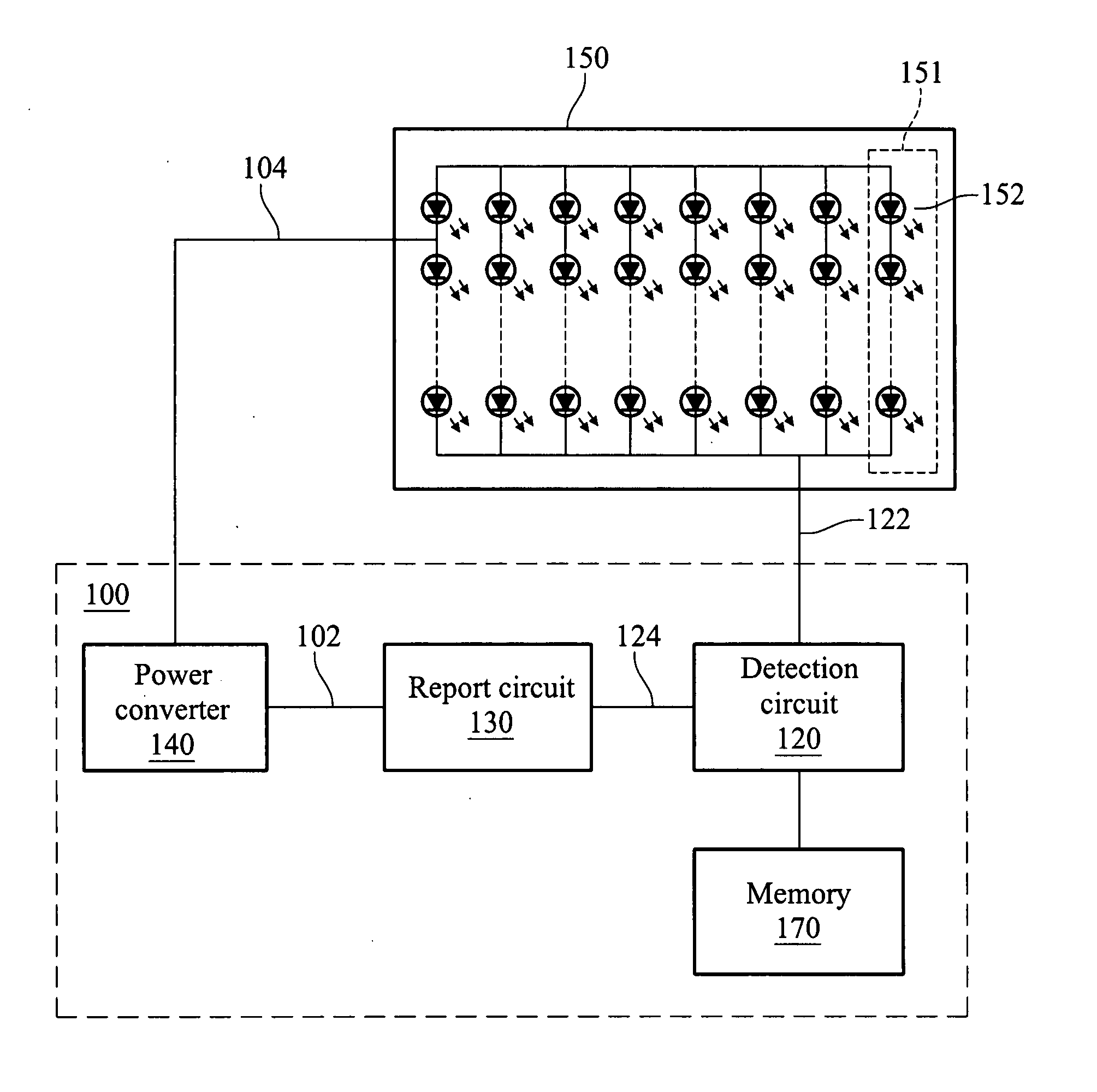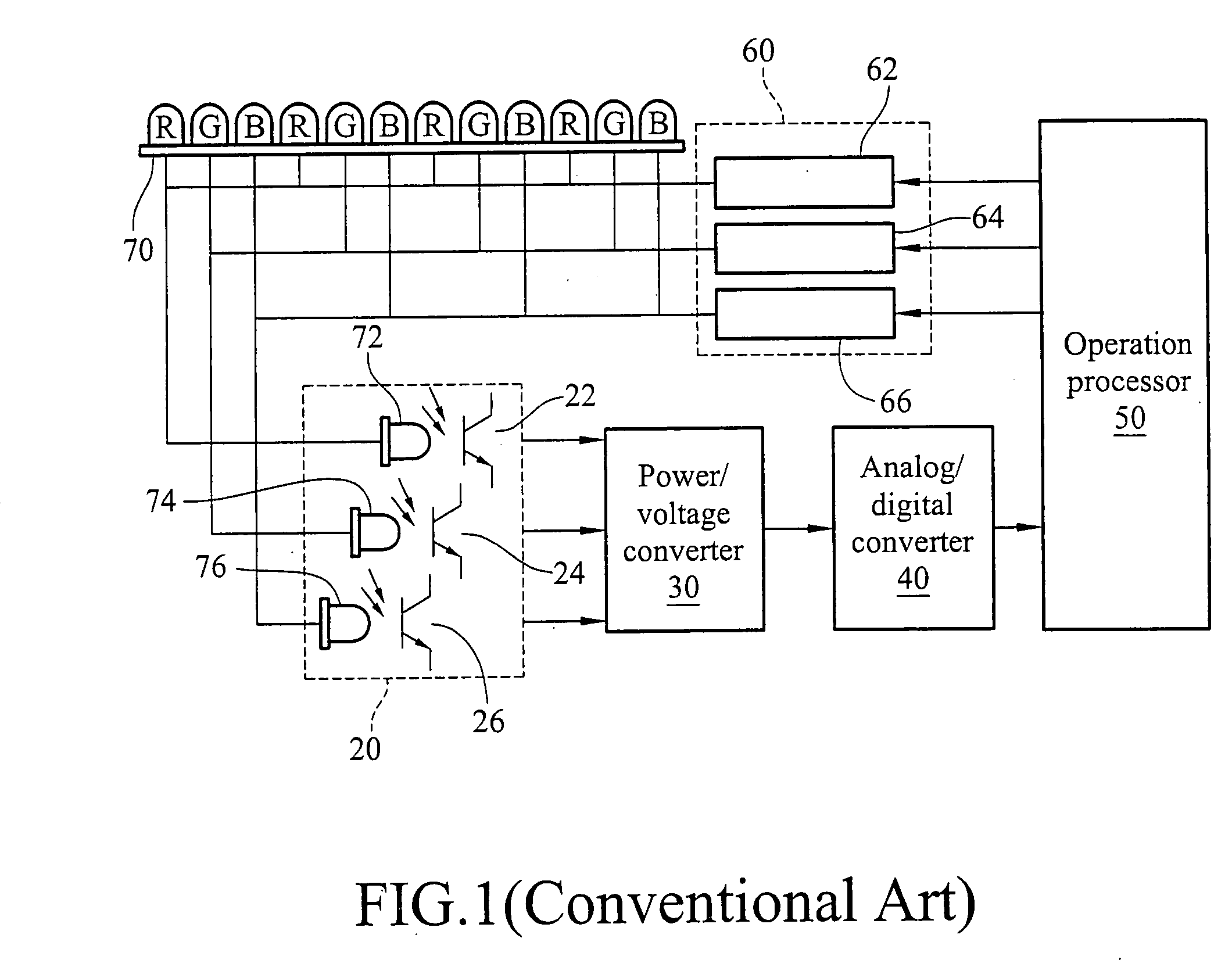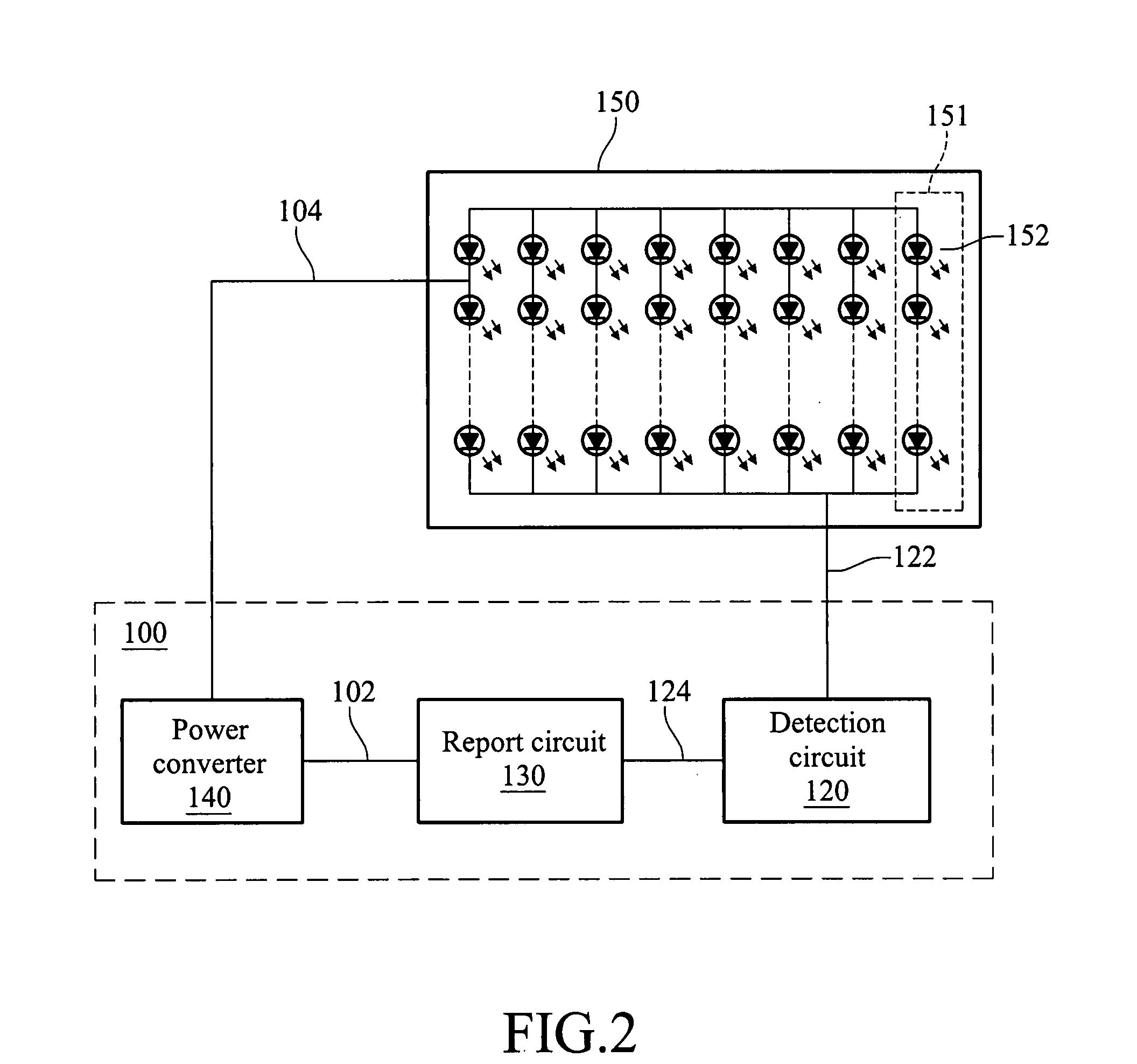Drive circuit for light emitting diode
a technology of driving circuit and light-emitting diodes, which is applied in the direction of identification means, instruments, lighting and heating apparatus, etc., can solve the problems of reducing the voltage of emitting light, wasting time and labor to find defective led bulbs, and producing white light that is not uniform, so as to reduce the driving voltage and produce luminance more stable
- Summary
- Abstract
- Description
- Claims
- Application Information
AI Technical Summary
Benefits of technology
Problems solved by technology
Method used
Image
Examples
first embodiment
[0021]FIG. 2 is a circuit block diagram of the present invention. It can be found from FIG. 2 that the drive circuit 100 for LED of the present invention is used to drive an LED group 150 that includes a plurality of LED strings 151 connected in parallel (in FIG. 2, an LED group 150 includes eight LED strings 151). Each LED string 151 is includes a plurality of LEDs 152 connected in series. The drive circuit 100 drives the LED group 150 through providing a constant voltage or a constant current, and in the present invention, the drive circuit 100 uses a constant voltage to drive the LED group 150. The drive circuit 100 can drive all of the LED strings 151 at the same time, or can selectively drive a specific LED string 151 to emit light and drive each LED string 151 sequentially and repeatedly, such that the LED strings 151 are all driven. Meanwhile, if the switching speed is high enough, e.g., the switching time is less than 1 / 30 second, to human eyes, each LED 152 is constantly on...
second embodiment
[0031]Furthermore, FIG. 3 is a diagram of the present invention. It can be found from FIG. 3 that switch components 160 are corresponding to the LED strings 151, and the switch components 160 are electrically coupled to the LED group 150, the report circuit 130, and the detection circuit 120. The report circuit 130 selectively turns on one of the switch components 160, such that the power converter 140 drives the turned-on LED string 151 (the LED string 151 corresponding to the turned-on switch component 160). Thereby, only one LED string 151 is turned on at a same time point. In addition, the detection circuit 120 also only detects the string voltage 122 of the turned-on LED string 151, compares the string voltage 122 with the reference voltage, and outputs the detection signal 124 to the report circuit 130. The report circuit 130 then outputs the control signal 102 of the corresponding detection signal 124 to the power converter 140. The power converter 140 adjusts the driving vol...
third embodiment
[0036]Furthermore, FIG. 5 is a diagram of the present invention. It can be found from FIG. 5 that the detection circuit 120 is further electrically coupled to a memory 170, which stores the reference voltage of each LED string 151. Therefore, when the detection circuit 120 detects the string voltage 122 of a LED string 151, the reference voltage corresponding to the LED string 151 is obtained from the memory 170 for comparison, so as to output a detection signal. Thus, the above function can also be achieved. Moreover, the memory 170 can also be realized by using a variable resistor.
[0037]Finally, the reference voltage is compared when the detection circuit 120 detects the string voltage 122, so as to output a detection signal 124 to the report circuit 130. However, besides this method, the reference voltage also can be allocated at the report circuit 130. Thereby, the detection circuit 120 detects and outputs a string voltage 122 of the LED strings 151 respectively, and the report ...
PUM
 Login to View More
Login to View More Abstract
Description
Claims
Application Information
 Login to View More
Login to View More - R&D
- Intellectual Property
- Life Sciences
- Materials
- Tech Scout
- Unparalleled Data Quality
- Higher Quality Content
- 60% Fewer Hallucinations
Browse by: Latest US Patents, China's latest patents, Technical Efficacy Thesaurus, Application Domain, Technology Topic, Popular Technical Reports.
© 2025 PatSnap. All rights reserved.Legal|Privacy policy|Modern Slavery Act Transparency Statement|Sitemap|About US| Contact US: help@patsnap.com



